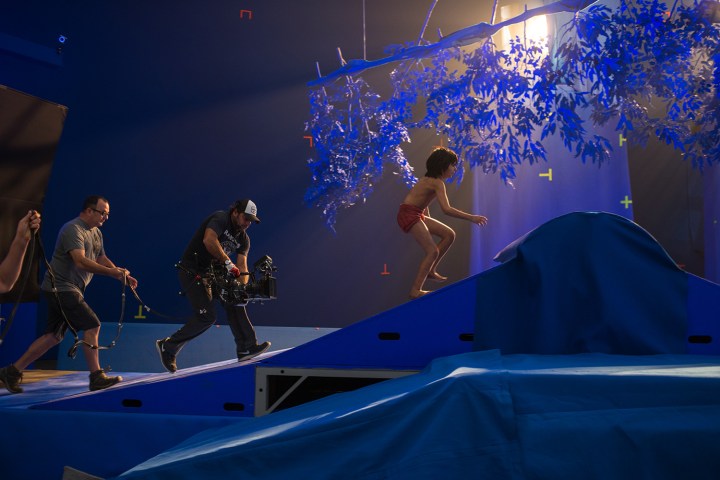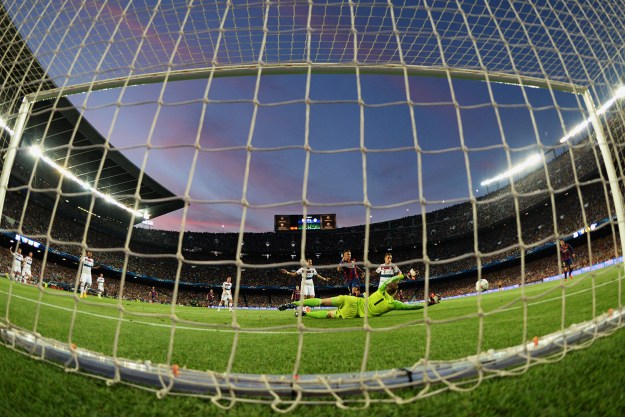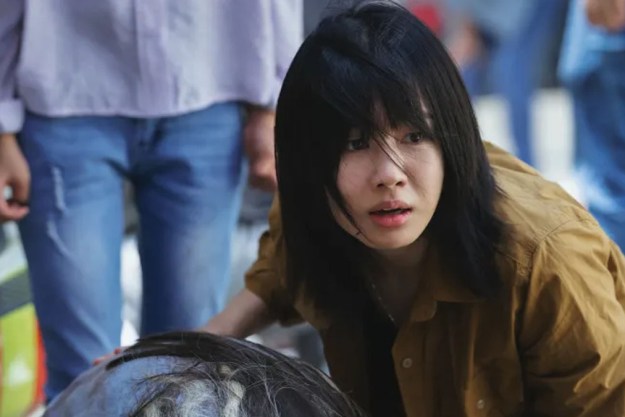
Previously, we looked at the visual effects that recreated a real-world disaster in Deepwater Horizon, then we examined the magic behind the reality-bending sequences in Marvel Studios’ Doctor Strange. Now, we explore the digital magic that made a jungle full of animals talk in The Jungle Book.
(Note: This is an update of an article we originally published in August 2016, edited for our Visual Effects Oscar series.)
The live-action remake of The Jungle Book was one of 2016’s surprise hits, earning high marks from critics and fans alike on its way to more than $364 million in U.S. theaters and a whopping $966.5 million worldwide.
Directed by veteran actor and Iron Man director Jon Favreau, The Jungle Book is a remake of Walt Disney Pictures’ 1967 animated film (which was itself inspired by Rudyard Kipling’s collection of jungle tales) and follows an orphaned human boy raised by wolves in the jungles of India. 12-year-old actor Neel Sethi portrays Mowgli, the boy at the heart of the story who must find his place in the world when the deadly tiger Shere Khan threatens him and his adopted family.
It wasn’t enough to simply create a cast of animal allies and enemies for Mowgli to interact with on his journey of self-discovery, though. Favreau and Disney tasked visual-effects studios Moving Picture Company and Peter Jackson’s Weta Digital with making the creature characters talk with the voices of some of the most famous names in Hollywood.
Creating just one lifelike animal digitally can often be a difficult process (just ask the Life of Pi visual-effects team), but crafting an entire cast of jungle creatures that not interact with a human cast member and talk in a believable way? It was an extremely formidable challenge for The Jungle Book’s creative team.
“There was no half-measure in creating this world and these characters.”
“It was daunting, but I felt like the technical ability to do it was there,” producer Brigham Taylor told Digital Trends. “Every time we sat down with someone who knew more about this sort of thing, it was sort of reaffirmed that we can do this.”
“But the truly daunting thing is that there’s no easy way to do it,” he explained “We had to be fully committed to it. There was no half-measure in creating this world and these characters. It’s a massive commitment of time and energy and resources. It wasn’t like we had shortcuts that we could take. That was daunting, knowing that this was going to be a very big bet that everyone was going to take — because once you decide on the process, it’s a big deal.”
Once Disney and the film’s creatives had committed to bringing the story’s cast of jungle creatures to life — and make them talk — it became the job of MPC and Weta to make that vision for the film a reality, under the watchful eye of two-time Academy Award winner Robert Legato. A veteran visual-effects supervisor who won Oscars for his work on 2011’s Hugo and 1997’s Titanic (as well as a nomination for 1995’s Apollo 13), Legato saw a unique challenge in bringing the world of The Jungle Book to life in a way that makes talking animals seem entirely, well … realistic.
“Photographically, you can make something look real, and then you can get it behaving like it’s real, and then you can put it in a big production … but we wanted to do that times 30,” While that may sound like a near-insurmountable task, Legato explained that the thought process actually made the prospect of creating the massive cast of animal characters in The Jungle Book seem more manageable. “[You have to think], ‘Well, yes, you can do it — because you can do one, so you can do 30.'”
“Once you get that one thing you can pull off, it gives you the confidence to pull off the rest of it,” he recalled. “The real hard part in moviemaking is to make the standard the same for shot after shot after shot. In a lesser movie, things like the moment you see Shere Khan would be the high point of the movie, and the rest would be live-action. But in our movie, every shot had to be that way.” Khan added that the real challenge wasn’t “just getting there, but keeping it up” throughout the full-length film.
In order to both “get there” and maintain that high standard over the course of 106-minutes of action, MPC was recruited to create the bulk of the jungle characters. After creating ground-breaking effects for both Rise of the Planet of the Apes and Dawn of the Planet of the Apes, Weta was brought in to help with the primate army of King Louie, a giant orangutan-like ape voiced by Christopher Walken in the film.
The close proximity of The Jungle Book’s human protagonist to the animals — and the way the characters needed to interact and communicate — also made it impossible to use live stand-ins for the animal characters, which put the task of creating most of the film’s cast on the shoulders of the visual-effects teams. According to Legato, their guiding principle was always to avoid making the animal characters do anything that could only be done in an animated movie (with the exception of talking, of course), and to treat the film like a live-action movie in every possible way.
“You can do more fanciful, unrealistic stuff that seems fun with animation, and animators want to animate, but we didn’t want to do it exactly that way,” said Legato. “We wanted to use filmmaking skills to tell the story. We didn’t want the tiger to jump 50 more yards than a tiger can jump or have the kid do something a kid could never do.”
“Once you get that one thing you can pull off, it gives you the confidence to pull off the rest.”
Of course, once they had the most realistic animals possible, the producers then turned to making the animals do something decidedly un-realistic: speak English.
“We’ve all seen a lot of talking animal movies, but we didn’t want this to feel like the ones we’ve seen before,” explained Taylor. Instead, the team’s goal was to make their cast of ultra-realistic animals talk without losing that natural look they worked so hard to create.
“Jon was very insistent on creating a very naturalistic and realistic world including the look of these characters, and we only deviated in small percentage points from their natural counterparts — but then we had to consider how they looked talking,” recalled Taylor. “So it became a stylistic choice to try to adopt all the physiology of the given species you’re dealing with and not stray too far from it. It’s the animator’s job to see how you can use those limitations, whether it’s a large cat or a wolf or a bear, all which have very different physiologies, and somehow make words fit in there. It took a lot of discussion and a lot of iterations of saying too much or too little to get to the point where you don’t think about it at all.”
“It’s a real magic trick that hopefully you take for granted when you see it,” he added.
An all-star cast of actors was recruited to provide the voices behind the film’s animal characters. Along with Walken as King Louie, the cast also includes Bill Murray as Baloo the bear, Ben Kingsley as Bagheera the panther, Scarlett Johansson as Kaa the python, Lupita Nyong’o as Raksha the wolf, and Giancarlo Esposito as Akela, another wolf. Capping it all off is Idris Elba as the deadly tiger, Shere Khan.
In some cases, the facial structures of some of the animal characters were tweaked ever-so-slightly by the visual-effects artists to mimic certain elements of the actors’ faces in order to make the voices that much more believable.
“We had to approach it from the perspective of ‘If the animals did talk, they would talk this way,'” explained Legato. “They would move their throats in a particular way, and they would breathe in a particular way, [and] they would have to take breaths between lines, and all of those various things. That was our leap of faith.”
“But if you’re doing it and you designed the creature to reflect the exact physical nature of the animal, with muscles and joints and the way the mouth moves, it’s not really animated in a way that lets you do anything you want,” he continued. “You’re now a puppeteer and controlling the physical nature of them only in ways that their musculature allows. And then you hope that will sell it … That’s the way we approached it: Give them so much reality that you forget that any of it is fake. It becomes real to you.”
The film’s overwhelmingly positive reviews suggest that the The Jungle Book’s creators were able to do exactly that: Create a genuine, emotional connection between the audience and a cast of talking, digitally created animals from the jungles of India.
And now the visual-effects team for The Jungle Book has been rewarded with an Oscar nomination for their efforts — something that seems like a well-deserved honor for Legato and his team.
“Because the expectation is incredibly high and you don’t have that fantasy element to fall back on, as soon as you make a scene that looks real, whatever is fake sticks out,” said Legato. “So we had to tuck the animation back and only mimic what would happen in real life. My hat is off to all the animators who worked on the movie, because they took the assignment and created something that’s a landmark for animation.”
The 89th Academy Awards ceremony will air Sunday, February 26, at 7pm ET on ABC.












